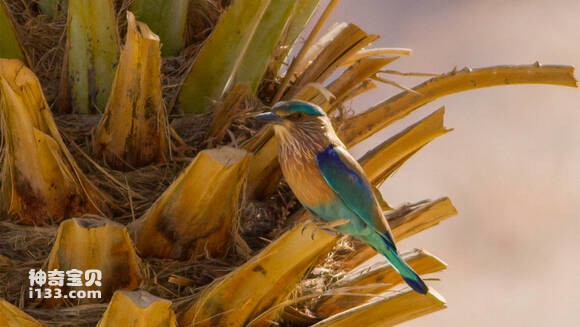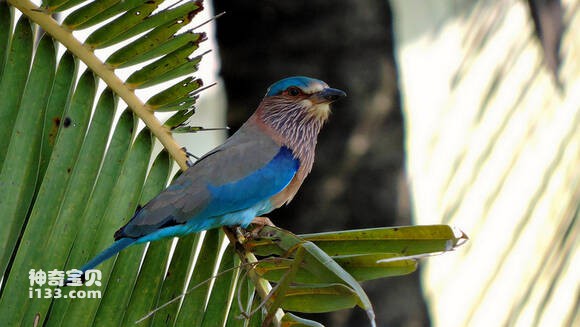Coracias benghalensis
IUCN
LCBasic Information
Scientific classification
- name:Coracias benghalensis
- Scientific Name:Coracias benghalensis,Indian Roller
- Outline:Climbing birds
- Family:
Vital signs
- length:32-35cm
- Weight:160-180g
- lifetime:No textual research information is available
Feature
Distribution and Habitat
Country of origin: Afghanistan, Bangladesh, Bhutan, Cambodia, China, India, Iran, Iraq, Kuwait, Laos, Malaysia, Myanmar, Nepal, Oman, Pakistan, Saudi Arabia, Sri Lanka, Thailand, UAE, Vietnam.
Locations of lost birds: Maldives, Qatar, Syria, Turkey.
In China, it is mainly distributed in southern Sichuan, southern Tibet and Yunnan.
It inhabits lowland areas below 1200 m, especially in open planted plains or deciduous forest belts, but also in urban areas such as parks and towns, where it uses overhead cables as a vantage point for hunting.
Appearance
The eyes are black, the forehead is light brown-white, the crown is dark blue, the two sides of the crown are light blue, with a narrow white and blue brow line; The wings are green and brown on the back and inside. Waist blue purple, inner fly feathers more blue, tail overlying feathers light blue. The central tail feathers are dark brown, with blue patches on both sides of the base and tail shaft. Lateral tail feather base dark blue, apex blue, shaft black. Small wing coverts deep purplish blue. Large cover gray light blue. The primary feathers are dark blue at base, gradually fading to pale blue at apex, and brown at apex. Secondary feathers dark blue, base light blue. Chin, throat and upper breast grape purple, with light blue stripe; Lower thorax grape brown, abdomen and ribs and tail undercoverings light blue, flange, underwing coverings and axils dark blue.
Iris light brown, mouth dark brown, tarsus and toes yellow brown.
Size measurement: weight 160~170 grams, ♀160~180 gr
Details
Coracias benghalensis, Indian Roller, is unknown.

Brown-chest Buddhas often live alone or in pairs, and often stand on dead branches or wires at the top of trees in forest, village or farmland areas. Flocks of the birds are extremely rare and may form family groups. Diving into the water from a high altitude while bathing was once misinterpreted as fishing.
The brown-breasted Buddhas feed primarily on insects, especially beetles, crickets, and grasshoppers, but also often on flying insects such as wasps, flies, moths, and butterflies, and occasionally plant seeds. When conditions permit, amphibians also form a large part of their diet, although this food source is often unavailable in drier regions. They hunt mainly by flying in the air, but sometimes on the ground.

The brown-breasted Buddhist monk is a resident bird in Tibet and Yunnan, and a summer migratory bird in Sichuan. The call is rough like a crow's sound. When threatened, the cries become shrill and frequent.
The breeding period of the brown-breasted Buddhist monk is from spring to early summer (April to July). Males start showing off as early as February. The show-off pattern is extremely complex, with the male birds first flying high and then tumbling down while displaying a series of flying skills, they shriek and flap their wings rapidly, flashing bright colors on their wings and tails.

Brown-chested Buddhas usually nest in holes in trees or in the walls of old buildings. Each brood lays 3 to 5 eggs, usually 4 eggs, white eggs, oval shape, size of 31~37mm×26~30mm. The male and female incubate the eggs in turn, and the incubation period is 18 days. The chicks plumage about 35 days after birth.
Protect wild animals and eliminate wild meat.
Maintaining ecological balance is everyone's responsibility!








